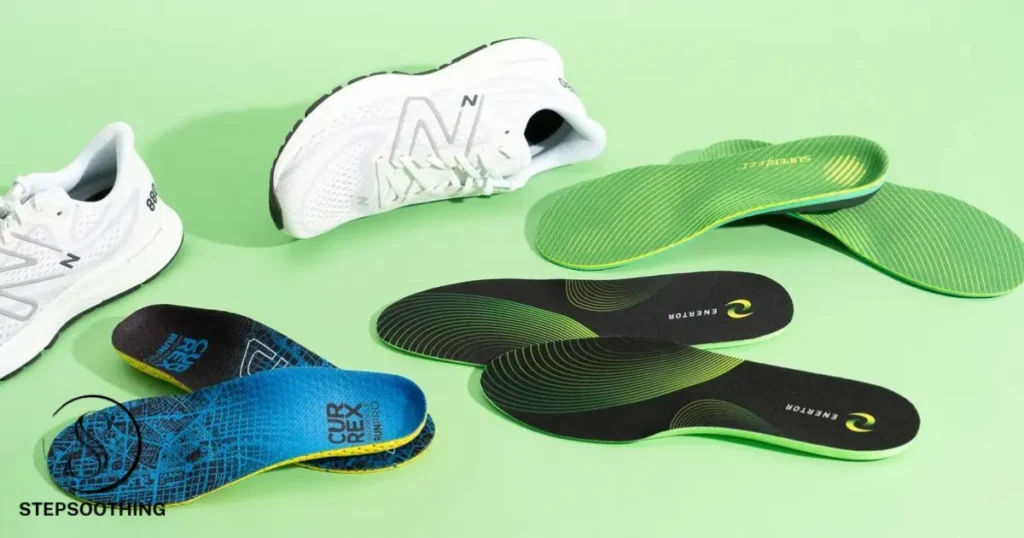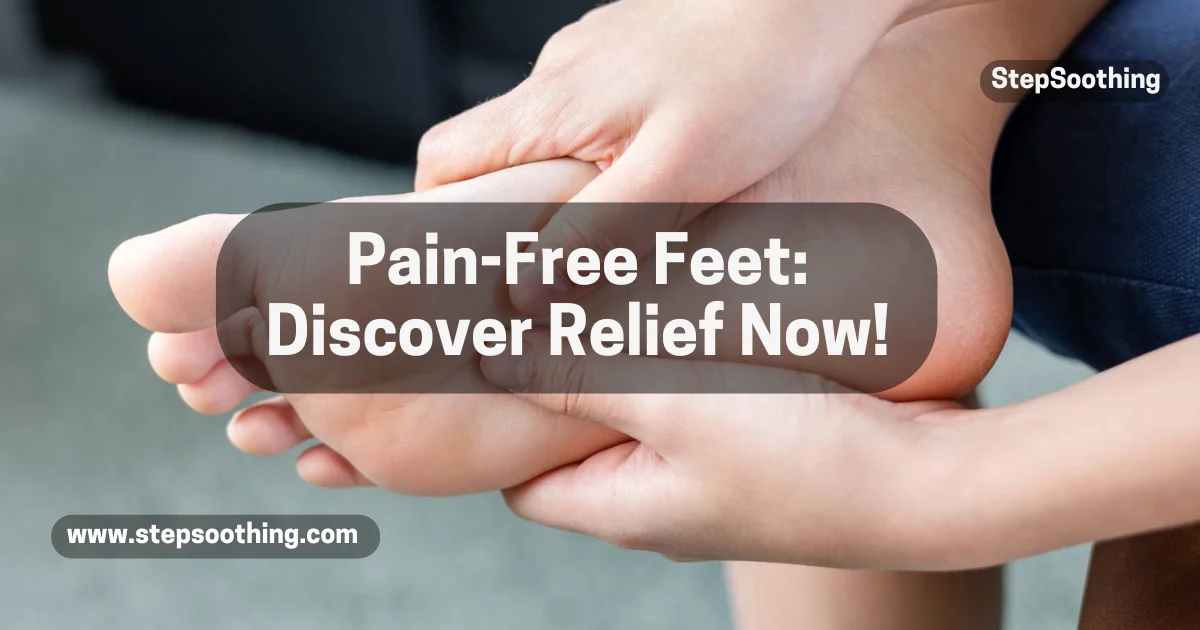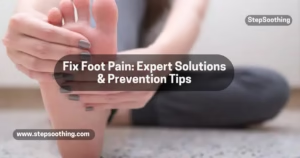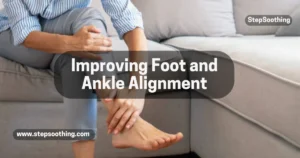Foot health is often disregarded, yet it holds immense importance in maintaining our overall well-being. Our feet bear the weight of our entire body and provide the necessary support for every single step we take. Relieving foot pain and discomfort becomes paramount in preserving our mobility, productivity, and overall quality of life. In this context, the utilization of insoles emerges as a versatile and effective approach to addressing an array of foot-related concerns.
Relieving Foot Pain and Discomfort

1. Understanding Foot Pain and Discomfort
Foot pain and discomfort can stem from various causes, including ill-fitting shoes, overuse, foot conditions like plantar fasciitis or bunions, and even medical conditions like arthritis or diabetes. Ignoring foot pain can lead to more severe consequences, such as limited mobility, chronic issues, and the potential for further complications. It’s essential to address foot pain promptly to prevent it from escalating and impacting your daily activities.
2. Insoles: A Versatile Solution for Foot Support
Insoles, also known as orthotic inserts or foot supports, are designed to provide additional cushioning, support, and stability for your feet. They come in different types, including prefabricated, semi-custom, and custom-made options, and are constructed from various materials like foam, gel, or a combination of materials to meet specific needs.

3. Biomechanical Benefits of Insoles
One of the primary benefits of using insoles is their ability to improve foot alignment and posture. By redistributing pressure and weight distribution across the foot, insoles can help alleviate stress on specific areas, reducing the risk of pain and discomfort.
Additionally, insoles provide shock absorption and impact reduction, which is particularly beneficial for individuals who engage in high-impact activities or spend long hours on their feet.
4. Insoles for Specific Foot Conditions
Insoles can be tailored to address a wide range of foot conditions, making them a valuable tool in the management and treatment of various foot-related issues:
- Plantar fasciitis and heel pain: Insoles with targeted heel cushioning and arch support can help alleviate the strain on the plantar fascia, reducing inflammation and pain.
- Flat feet and overpronation: Insoles with medial arch support and motion control features can help correct overpronation and provide stability for individuals with flat feet.
- High arches and supination: Insoles with cushioning and shock-absorbing properties can help distribute weight evenly and reduce the impact on high arches.
- Bunions and other foot deformities: Insoles with specialized accommodations can help redistribute pressure and reduce friction on affected areas, providing relief and preventing further aggravation.

5. Insoles for Active Individuals and Athletes
For active individuals and athletes, insoles can be a game-changer in terms of performance and injury prevention. By providing enhanced stability and support during physical activities, insoles can help optimize biomechanics, reduce fatigue, and minimize the risk of overuse injuries such as stress fractures or tendonitis.
Many manufacturers offer customized insoles designed specifically for various sports and activities, catering to the unique demands and movements involved.
6. Insoles for Occupational Foot Health
Individuals who spend long hours standing or walking as part of their occupation, such as healthcare professionals, retail workers, or factory employees, can greatly benefit from using insoles. By improving comfort and reducing fatigue, insoles can help alleviate the strain and discomfort associated with prolonged periods on their feet, ultimately improving productivity and overall well-being.

7. Choosing the Right Insoles
Choosing the right insoles to relieve foot pain and discomfort is important. Here are some simple tips to help you make a good choice:
- Understand your needs: Figure out the specific foot problems you have and what kind of support you need. Think about things like the shape of your arch, any foot conditions you have, and any pain or discomfort you feel.
- Fit and feel: When you try on insoles, take out the existing ones in your shoes and put the new ones in. Make sure they fit well and give you the right support. They shouldn’t feel too big or too small. It’s important that they feel stable and comfortable.
- Customization: Some insoles can be cut to fit your shoe size. Look for measurements on the bottom of the insole. This helps make them fit better and feel more comfortable.
- Long-lasting: Keep in mind that most insoles last about a year with regular use. Consider how long they will last when you make your decision.
- Get advice: If you’re not sure which insoles to choose, ask a foot doctor or someone who knows a lot about shoes. They can give you personalized advice based on your needs.
Remember, picking the right insoles can really help relieve foot pain and make you more comfortable. It can also make it easier to do your daily activities.
8. Insole Care and Maintenance
Proper care and maintenance are crucial for prolonging the lifespan and effectiveness of your insoles. Regular cleaning with mild soap and water can help remove dirt and odors, while proper storage in a cool, dry place can prevent warping or deterioration.
Additionally, it’s important to replace insoles when they show signs of wear and tear, as worn-out insoles may no longer provide adequate support and cushioning.
Conclusion
Investing in high-quality insoles can be a game-changer for relieving foot pain and discomfort while promoting overall well-being. These specialized inserts provide targeted support, cushioning, and shock absorption, effectively alleviating foot pain and discomfort.
They also play a vital role in preventing injuries and enhancing performance, catering to individuals of all ages and activity levels. Whether you’re an athlete, a professional who spends long hours on your feet, or someone dealing with a specific foot condition, insoles offer a versatile and effective solution to address your foot-related needs. By prioritizing foot care and incorporating insoles, you make a valuable investment in your mobility, comfort, and overall quality of life.
People Also Asked Regarding Relieving foot pain and discomfort
Q1.How do insoles help relieve foot pain and discomfort?
Insoles work by providing cushioning, shock absorption, and support to the feet. They help distribute weight evenly across the foot, reducing pressure on high-impact areas like the heels and balls of the feet. This can alleviate pain caused by conditions like plantar fasciitis, metatarsalgia, and heel spurs. Additionally, insoles with arch support can help correct imbalances and improve overall foot alignment, reducing strain on the ankles, knees, and hips.
Q2.What types of foot conditions can benefit from using insoles?
Insoles can be beneficial for a wide range of foot conditions, including plantar fasciitis, flat feet, high arches, bunions, and metatarsalgia. They can also help alleviate pain and discomfort caused by overuse injuries, arthritis, and other medical conditions that affect the feet. By providing targeted support and cushioning, insoles can help address the specific needs of each foot condition.
Q3.Are custom orthotics better than over-the-counter insoles?
Custom orthotics, prescribed and fitted by a podiatrist or foot specialist, are generally more effective than over-the-counter insoles for severe or chronic foot problems. Custom orthotics are molded to the unique shape and contours of your feet, providing personalized support and alignment. However, for mild to moderate foot discomfort, over-the-counter insoles can be a more affordable and accessible option.
Q4.How long do insoles typically last?
The lifespan of insoles can vary depending on factors such as the materials used, your activity level, and the type of shoes you wear them in. On average, most insoles should be replaced every 6 to 12 months, or sooner if you notice signs of wear and tear. It’s important to replace insoles regularly to ensure they continue providing adequate support and cushioning.
Q5.Can insoles be used in conjunction with other foot care strategies?
Absolutely! Insoles work best when combined with other foot care strategies, such as stretching and strengthening exercises, proper footwear selection, and regular foot hygiene practices. By taking a holistic approach to foot health, you can maximize the benefits of insoles and promote overall foot comfort and well-being.



